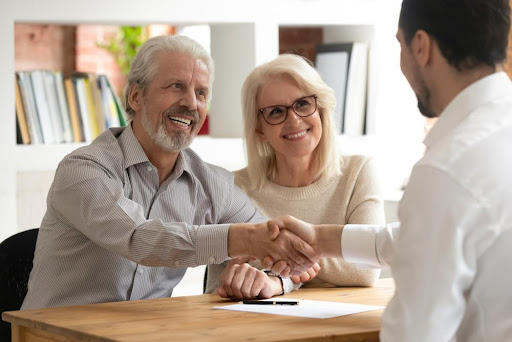The Relationship Between Portfolio Turnover and Liquidity
Without question, in trading, the concepts of portfolio turnover and liquidity intertwine, shaping investment strategies and outcomes. Portfolio turnover measures the frequency of buying/selling securities in a portfolio, while liquidity gauges the ease of converting assets into cash swiftly and with minimal price impact.
Understanding the relationship between these two is paramount for investors. High portfolio turnover indicates an active trading tactic, taking advantage of short-term market fluctuations but incurring transaction costs. And liquidity ensures the ability to enter/exit positions simply, minimizing illiquidity risks.
In the subheadings below, we shall explore the intricate relationship between portfolio turnover and liquidity. We delve deeper into their influence on trading strategies, risk management, and performance evaluation. Through the text that follows, we navigate this topic, discussing its implications, along with things such as methods on how to calculate portfolio turnover. So, get ready to uncover the chief factors that influence portfolio dynamics and the delicate balance between turnover and liquidity in the investing realm.
Understanding Portfolio Turnover
The portfolio turnover ratio is a vital metric in assessing trading activity within a portfolio. It measures the frequency at which securities get bought/sold over a specific timeframe. As mentioned above, a higher turnover implies more active trading, while a lower one suggests a more passive approach.
Several factors contribute to portfolio turnover, including investment objectives, market conditions, and tactics all play a role. For example, a long-term value-focused fund may exhibit lower turnover, aiming to ride out market fluctuations.
Calculating portfolio turnover involves dividing the lesser of purchases or sales by the average portfolio value during a period. The result then gets multiplied by a factor to annualize the ratio, interpreting it depending on the investment strategy and asset class in play. As a rule of thumb, a turnover above 100% points to high trading activity, while below 50% indicates a more buy-and-hold scheme.
Remember, portfolio turnover isn’t inherently good or bad. Know that this is a reflection of the utilized style and objectives set. A higher turnover may lead to increased transaction costs, potentially impacting returns. Balancing turnover with objectives and assessing its influence on liquidity is paramount for optimizing portfolio performance.
Exploring Liquidity in Financial Markets
Liquidity in financial markets refers to the ease and quickness at which assets can be bought/sold without substantially affecting their price. In short, this is nothing more than a measure of market depth and the ability to convert assets into cash rapidly.
Liquidity is of utmost importance for traders as it ensures the ability to enter/exit positions efficiently, manage risk, and meet financial obligations. Adequate liquidity permits investors to capitalize on marketing openings, supplying flexibility in portfolio management and reducing the hazards of being unable to convert assets into cash when needed.
The Impact of Portfolio Turnover on Liquidity
Portfolio turnover directly influences market liquidity. High portfolio turnover often strains market liquidity, especially in less liquid ones or when dealing with illiquid assets. Fast buying/selling securities can increase market impact costs and produce difficulties in executing trades efficiently. That connection between liquidity and high portfolio turnover highlights the challenges of maintaining liquidity when engaging in active investing systems.
Transaction costs also have a role in the link between liquidity and portfolio turnover. Frequent buying/selling of securities can lead to generating dramatic transaction costs, like taxes and brokerage fees. These can erode returns, negatively affecting portfolio performance. Furthermore, higher transaction costs can further diminish liquidity since they produce additional expenses and may discourage investors from entering/exiting positions.
Liquidity Considerations in Portfolio Management
Strategies for managing portfolio turnover while maintaining liquidity involve an equilibrium of active trading and liquidity needs. One approach is to adopt longer-term horizons, focusing on fundamental analysis and avoiding excessive trading. That can aid in reducing turnover and associated transaction fees while maintaining liquidity by letting positions mature.
Another tactic is to diversify a portfolio across varied asset classes and territories. A well-diversified collection can assist in mitigating the impact of liquidity constraints in specific regions or asset types, enhancing overall portfolio liquidity.
Balancing the trade-offs between portfolio turnover and liquidity requires careful consideration of trading goals and risk tolerance. Traders must assess their liquidity needs and appraise the pros of different trading tactics and costs. Also, that involves weighing the desire for active trading against the effects of transaction costs and liquidity.
When someone handles illiquid assets, like fixed-income securities and private equity, portfolio turnover can be inherently lower. Illiquid assets get characterized by substantial holding periods because their sale may incur higher transaction costs. Plus, it can take some time for them to get purchased. Thus, traders should assess the liquidity characteristics of such assets and look at their overall impact on portfolio turnover.
Strategies and Examples
When most investors discuss the connection between liquidity and portfolio turnover, two contrasting investment strategies pop up high-frequency trading and a long-term buy-and-hold strategy.
In the case of HFT (high-frequency trading), where trades get executed almost instantly utilizing algorithms and short-term price fluctuations, portfolio turnover tends to be super high. That can strain liquidity, particularly in volatile markets.
Traditionally, HFT tactics rely on market liquidity to execute trades immediately. Yet, drastic trading volumes can erode liquidity and cause market disruptions.
Long-term buy-and-hold strategies get exemplified by famous investors like Peter Lynch and Warren Buffett, which typically exhibit lower portfolio turnover. By emphasizing long-term value and fundamental analysis, these traders seek to capture the growth potential of their chosen holding. And while this scheme may sacrifice short-term trading openings, it maintains liquidity by avoiding excessive buying/selling.
The Role of Technology in Managing Portfolio Turnover and Liquidity
Undoubtedly, modern tech has become a game-changer in managing portfolio turnover and liquidity by introducing exciting advancements. With the rise of automatic trading, the investment landscape has morphed enormously. Algorithms now execute trades in milliseconds based on real-time market data and predetermined rules, minimizing human biases and boosting efficiency.
Automation permits constant monitoring of liquidity conditions, triggering trades when predefined thresholds get met and reducing the impact on market prices. Moreover, technology has opened access to various exchanges and asset classes, making it easier to tap into market liquidity. By harnessing these tools, investors can nowadays make informed decisions and streamline their trading processes.
Regulatory Considerations
Navigating the regulatory landscape is pivotal in managing liquidity and portfolio turnover. Regulatory requirements, set forth by financial authorities, establish guidelines for liquidity management practices in the investment domain. These rules try to maintain market stability, protect investors, and ensure sufficient liquidity. Adhering to them affects portfolio turnover, as firms must meet liquidity thresholds and fulfill reporting obligations.
Regulatory changes can have significant implications, necessitating adjustments in investment strategies and risk management approaches. So, staying informed about regulatory developments is essential for investors to smoothly sail through the dynamic seas of portfolio turnover and liquidity management, ensuring compliance and adaptability in style.
Practices for Balancing Portfolio Turnover and Liquidity
For portfolio managers, conducting thorough research goes a long way toward identifying optimal investment opportunities for the desired time horizon, as it is important to consider the impact of trading costs on returns and liquidity. Ongoing monitoring of liquidity levels, market conditions, and regulatory changes is vital to make timely adjustments. Hence, managers should assess the liquidity profile of assets and ensure they align with liquidity needs.
On top of this, regularly reviewing and adjusting investment strategies based on changing market dynamics and investor objectives will aid in striking the optimal balance between liquidity and portfolio turnover. So, continuous monitoring and proactive adjustments are indispensable for successful portfolio management in an ever-evolving environment.
The Wrap Up
Key takeaways for investors on this topic include finding the correct balance between turnover and liquidity, meaning aligning strategies with goals while considering the impact of transaction expenses. Continuous monitoring and adjustments are crucial to adapt to changing market conditions and regulatory requirements. By utilizing high-end tracking apps and other software tools, traders stay informed, make data-driven decisions, and confidently navigate markets. Therefore, everyone with extra income should embrace investing, leverage technology, and embark on a trading journey using modern tools disposable at most people’s fingertips.







